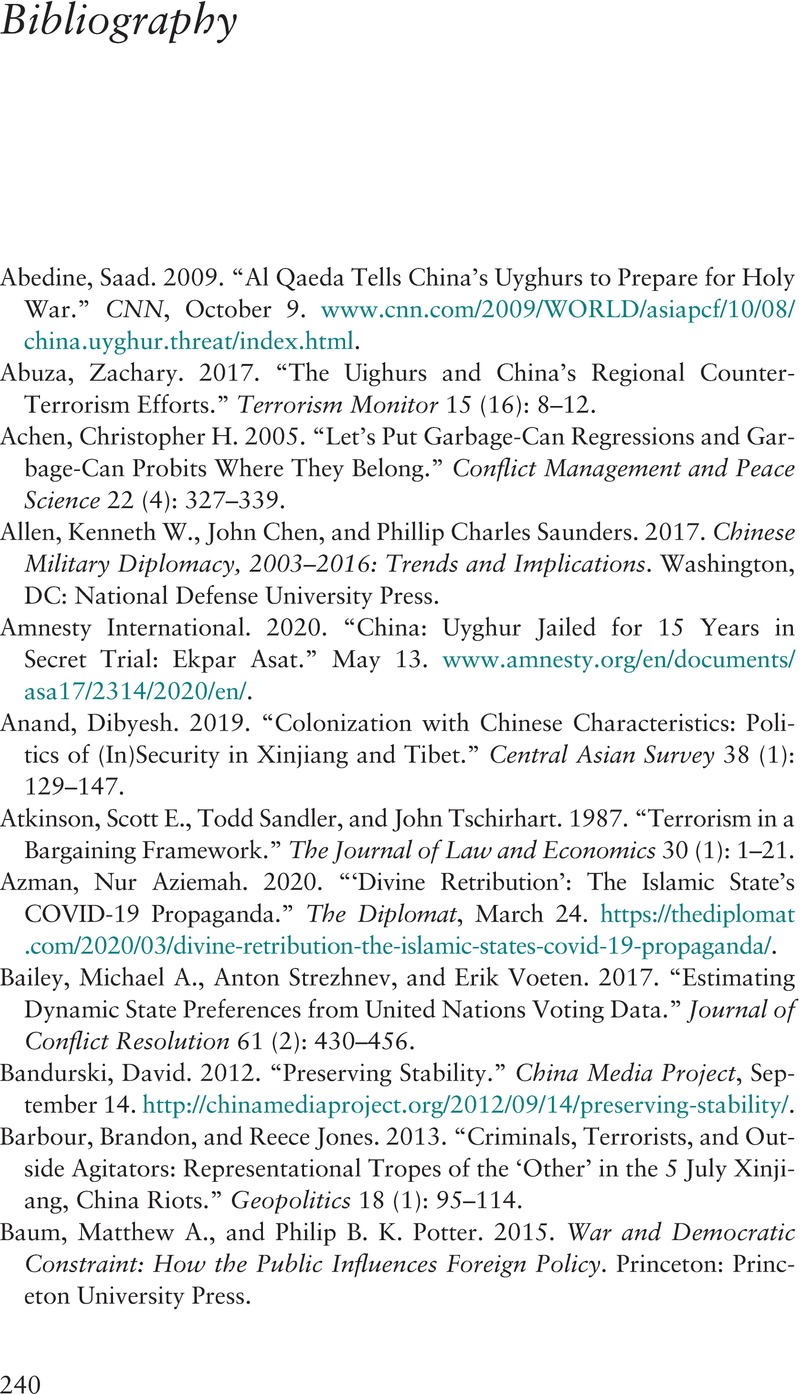Bibliography
Published online by Cambridge University Press: 01 December 2022
Summary

- Type
- Chapter
- Information
- Zero ToleranceRepression and Political Violence on China's New Silk Road, pp. 240 - 275Publisher: Cambridge University PressPrint publication year: 2022

